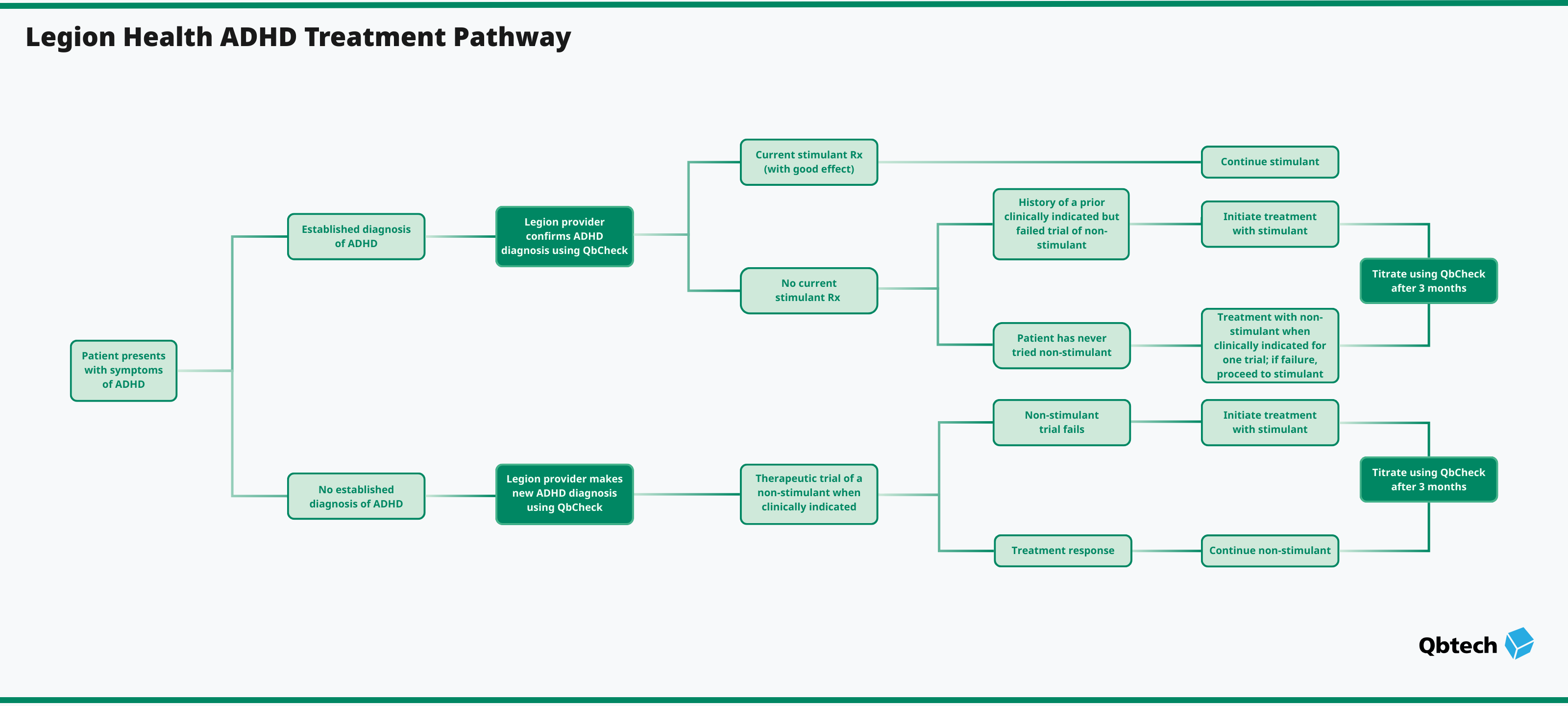Success in ADHD care isn’t just about reducing symptoms; it’s about long-term improvements in a patient’s outcomes. The better they understand their diagnosis, the easier it will be for them to manage symptoms, take ownership of their treatment, improve daily functioning, and achieve personal goals. This requires clear communication, smart tools, and a care model rooted in collaboration.
But how can clinicians effectively measure that kind of progress? Let’s find out.

Practical steps to ensure long-term success in ADHD care
These strategies can help clinicians drive the long-term success of their ADHD clinic by improving patient care and monitoring changes.
Create individualized treatment plans
When patients feel seen, they’re more likely to engage in treatment. A personalized treatment plan is more likely to be followed as it reflects your patients’ unique challenges and goals.
Schedule regular follow-ups and reviews
Regular appointments with honest conversations about progress and challenges are critical to building a successful long-term clinician-patient relationship.
Have clear plans for communicating between mental health providers
Your patients may need to see specialists or move between primary and secondary care at different times during their ADHD treatment. Ensure care transfer procedures are clear and don’t become pinch points for patient discontinuation.
Make use of ADHD technologies
Digital testing tools can help to bridge the gap between patient and clinician, facilitating conversations, monitoring, and assessment.
Make the path from diagnosis to treatment an easy one
A study of over 188,000 children and adolescents diagnosed with ADHD found 39.2% never started treatment, and of those that did, 11.9% waited over a year to start. Follow up promptly with new patients and provide them with a clear path to treatment to avoid losing patients early on.
Track changes to quality of life, not just symptoms
Measures of symptom change are important to help clinicians assess medication impact, but they might not mean a lot to a patient. Asking patients about actual life changes (finding school or work tasks easier, improved relationships with friends and family members, etc.) will be more relatable.
Provide support between appointments
Patients want to feel that they’re not alone in managing their ADHD. From providing psychoeducation materials to communicating over secure messaging systems between appointments, it’s important that patients feel supported.
Respond to issues quickly
Sometimes, the data you collect will highlight something that’s not working so well. When that happens, make a plan to deal with it promptly.
Warning signs your clinic isn’t delivering for success, and what you should do instead
Strong communication and clear pathways often separate the most successful ADHD clinics from those that struggle. Use these signs to identify issues and course-correct:
⚠️ Low conversion rates from referral to active patient
✅ Check the patient journey is user-friendly, particularly during registration.
✅ Ensure follow-up procedures are in place if patients miss appointments.
⚠️ Low retention rates of patients
✅ Use client satisfaction surveys to identify any problems and make adjustments.
✅ Use psychoeducation resources for continuity between appointments.
⚠️ Clinic is unable to scale or grow its ADHD services
✅ Communicate service strengths and USPs (e.g. using digital technologies to provide patients with visual representations of symptoms to aid understanding of ADHD)
✅ Capitalize on the potential for remote testing from digital ADHD tools to expand clinic services and offer virtual and hybrid care models.
At-home ADHD tests and benefits to clinicians
The development of digital testing technologies for ADHD means that remote testing is now possible. Tests like QbCheck can be completed in a patient’s home or a similar setting. Virtual testing may be more comfortable for patients, particularly children. It reduces the need for travel and makes receiving care more accessible.
There are also significant benefits for clinicians from using at-home ADHD tests:
- Digital ADHD tests provide objective data to supplement clinical observations, helping improve diagnostic confidence
- At-home testing can facilitate the establishment of virtual and hybrid clinics and support clinicians to expand their patient catchment area
- Streamlining the assessment pathway may also help clinicians to reach a decision more quickly and see more patients, with shorter in-clinic appointments.
What does a successful ADHD clinic look like?
A successful clinic is one that provides its patients with the gold standard of ADHD care while building relationships that last. Here’s what that successful clinic looks like, for both patients and the business:
- Patients receive annual medication reviews and treatment outcomes are monitored, including through periods of remission, as symptom recurrence is common (as high as 60%). This ongoing monitoring helps patients to avoid relapse, treatment discontinuation, or worsening of symptoms.
- ADHD services (assessment, appointments, titration, and long-term monitoring) are delivered consistently and cost-effectively, providing a sustainable source of income.
- The ADHD care pathway is streamlined, free from inefficiencies, and operationally robust so that admin costs are minimized.
- Patients referred for assessment convert to active patients and receive ongoing treatment for ADHD.
- Clinicians make use of digital technologies to drive efficiencies. An objective test can help to reduce the time from assessment to final decision and improve clinician confidence.
- The clinic is able to scale and expand, utilizing digital technologies such as remote ADHD testing to operate across geographical boundaries and provide virtual ADHD clinic services.
- The clinic utilizes compliant technologies (e.g. FDA-cleared in the US and CE-marked and registered on the MHRA database in the UK).
- Community engagement with parents, schools, and workplaces (collecting rating scales and teacher feedback, etc.) acts as a foundation for wider outreach. This can help with access to new patients.
The takeaway
A clinic that prioritizes better conversations sets the foundation for better care. It is fundamental to success that your clinic is seen as ‘good value’ by your patients, so they continue receiving treatment and recommend you to others.
Help your patients understand ADHD clearly and confidently
Access our free psychoeducation toolkit and elevate your patient conversations

